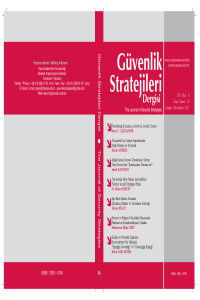Abstract
Bu çalışma, Soğuk Savaşdönemi uluslararası sistemin yapısı ve güç mücadelesinin temel parametreleri ile Soğuk Savaşsonrası uluslararası sistemin yeni yapısı üzerine tartışmayı amaçlamıştır. Soğuk Savaş'ın hemen sonrasındaki dönemi 'Yeni Dünya Düzeni' olarak niteleyen görüşler ile bu eksende tek kutupluluk ve çok kutupluluk tezleri tartışılmıştır. Ayrıca Soğuk Savaş'ın hemen sonrasında büyük tartışmalara yol açan, Zbigniew Brzezinski'nin ve Samuel Huntington'ın görüşleri değerlendirilmiştir. Çalışma ile ortaya konulmak istenen, Soğuk Savaşsonrası yeni uluslararası sistemin yapısının Yapısal Gerçekçilik temelinde deneysel yaklaşımla â"son gelişmeler ışığında- çok kutuplu bir yapıya doğru kaydığı ve yeni sürecin isminin 'Koalisyonlar Dönemi' olduğu tezini ileri sürmek olmuştur.
The Structure of Post Cold War International System: Is the Name of the New Era “Period Of Coalitions?”
Abstract
This study discusses the main parameters of the power struggles during the Cold War and the structure of the post-Cold War international system. In that context, the views of the post-Cold War era as “the New World Order” and the unipolarity and multipolarity theses are also discussed. Besides these, the opinions of Zbigniew Brzezinski’nin and Samuel Huntington’s theses, which caused comprehensive debates, are also evaluated. By doing that, the study aims to show empirically that the new international system after the Cold War has shifted towards a multipolar structure – in light of the most recent developments- based on the structural realist assumptions, and also this study claims that the new process should be called “the period of coalitions.”
Details
| Primary Language | Turkish |
|---|---|
| Journal Section | Articles |
| Authors | |
| Publication Date | June 1, 2012 |
| Submission Date | February 15, 2015 |
| Published in Issue | Year 2012 Volume: 8 Issue: 16 |

